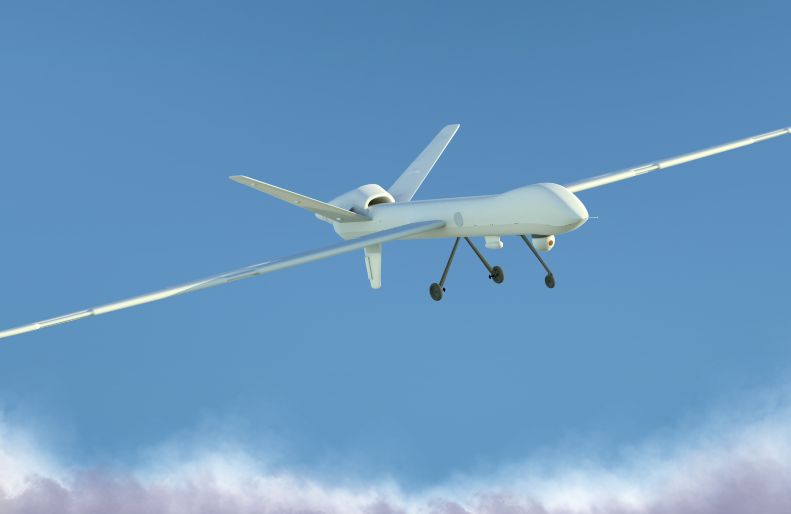Table of Contents
Unmanned Aerial Vehicles (UAVs), commonly known as drones, have become increasingly popular in recent years.
These versatile aircraft have a wide range of applications, from military and surveillance operations to commercial and recreational use.
UAVs have the potential to revolutionize the future of aviation, offering new opportunities and challenges for industries and individuals alike.
The AI Technology Behind Unmanned Aerial Vehicles
AI plays a crucial role in enhancing the capabilities of Unmanned Aerial Vehicles, allowing them to perform complex tasks autonomously. Here are some key AI technologies used in drones:
Core AI Technologies
-
-
Computer Vision: This is the backbone of drone intelligence. It enables drones to:
- Recognize and track objects
- Navigate through complex environments
- Detect obstacles and avoid collisions
- Perform tasks like object detection, image recognition, and scene understanding.
-
-
-
Machine Learning: This technology empowers drones to learn from data and improve their performance over time. It’s used for:
- Flight path optimization
- Predictive maintenance
- Anomaly detection
- Developing intelligent flight control systems.
-
-
Deep Learning: A subset of machine learning, it enables drones to process vast amounts of data and extract complex patterns. It’s used for:
- Image and video analysis
- Object recognition and classification
- Autonomous decision-making.
Specific Applications
- Autonomous Navigation: AI algorithms help drones plan and execute flight paths, avoiding obstacles and adapting to changing environments.
- Object Detection and Tracking: Drones can identify and follow specific targets, such as people, vehicles, or animals.
- Data Analysis and Interpretation: AI enables drones to collect and analyze data from various sensors, providing valuable insights for applications like agriculture, surveillance, and disaster response.
- Swarm Intelligence: Multiple drones can collaborate using AI to perform complex tasks as a group, such as search and rescue or aerial mapping.
Additional AI-Enabled Features
- Obstacle Avoidance: Real-time object detection and path planning allow drones to safely navigate around obstacles.
- Gesture Control: Drones can respond to human gestures, making them easier to operate.
- Facial Recognition: Drones can identify individuals based on their facial features for security and surveillance applications.
Military Applications of UAVs
One of the most well-known uses of UAVs is in military operations.
These aircraft can be used for reconnaissance, surveillance, and combat missions, providing valuable intelligence and reducing the risk to human pilots.
Unmanned Aerial Vehicles are also used for target acquisition and strike missions, allowing for precision strikes with minimal collateral damage.
The military’s reliance on UAVs has grown significantly in recent years, with many countries investing in advanced drone technology to enhance their capabilities on the battlefield.
Commercial and Civilian Uses of UAVs
In addition to military applications, Unmanned Aerial Vehicles have a wide range of commercial and civilian uses.
These aircraft are increasingly being used for aerial photography and videography, agriculture, search and rescue missions, and infrastructure inspection.
UAVs can access hard-to-reach or dangerous areas, providing valuable data and imagery for various industries.
For example, drones are used to monitor crops, assess damage after natural disasters, and inspect bridges and power lines.
The use of drones in commercial and civilian applications is expected to grow significantly in the coming years, as more industries recognize the benefits of drone technology.
Challenges and Regulations
While Unmanned Aerial Vehicles offer many benefits, they also present challenges and regulatory issues.
One of the main concerns surrounding UAVs is privacy and safety. Drones can be equipped with cameras and sensors that can collect sensitive data, raising concerns about surveillance and data security.
In addition, the growing number of drones in the sky poses a risk to manned aircraft, leading to concerns about collisions and airspace congestion.
To address these challenges, governments around the world have implemented regulations to control the use of drones.
These regulations cover issues such as flight restrictions, licensing requirements, and privacy concerns.
As UAV technology continues to advance, it will be important to strike a balance between innovation and regulation to ensure the safe and responsible use of drones.
Future Trends in UAVs
The future of UAVs looks promising, with continued advancements in technology and increasing demand for drone services.
One of the key trends in Unmanned Aerial Vehicles is the development of autonomous systems that can perform tasks without human intervention.
These systems have the potential to revolutionize industries such as transportation, delivery, and infrastructure maintenance.
Another trend in UAVs is the development of vertical take-off and landing (VTOL) drones, which can take off and land vertically like a helicopter, making them ideal for urban environments.
As UAV technology continues to evolve, we can expect to see drones playing a more prominent role in our everyday lives, offering new opportunities and challenges for industries and individuals alike.
In conclusion, Unmanned Aerial Vehicles have the potential to revolutionize the future of aviation, offering new opportunities and challenges for industries and individuals alike.
From military and surveillance operations to commercial and civilian uses, drones are increasingly being used in a wide range of applications.
While UAVs offer many benefits, they also present challenges and regulatory issues that need to be addressed.
With continued advancements in technology and increasing demand for drone services, the future of UAVs looks promising, with drones playing a more prominent role in our everyday lives.
